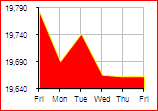Helen : The woman who could not care

Friday Poora Filmi Hai
Last week I was on a book buying spree. Fortunately, I stumbled upon First Proof. Its a compilation of writings of various upcoming Indian authors. Jerry Pinto has contributed perhaps the most interesting piece in the book - The woman who could not care. It talks about Helen and early days of bollywood in general. I enjoyed reading it thoroughly and I recommend it very strongly. Following are some of my favorite parts from the essay.
The nation state was not very old when Helen began her first rehearsals. The memsahibs were not yet a distant memory to be retrieved by Raj enthusiasts and professional nostalgists. They had left only a short while previously. And while they were not precisely white goddesses to whom all Indian men aspired, there was that old colonial hangover of the woman who you could not touch because she belonged to the ruling class.
...
If the heroine was the ethereally unavailable Hindu woman, objects of male lust would also need to be devised.
...
For a nation not old enough to ogle its own women, Helen must have seemed the ideal vamp. What better way of exacting revenge for all those years of frustration than to cast the available white women as objects of lust?
...
It would be very many years before a Hindu vamp would be accepted in the form of Bindu in the late 1960s. Until then outsiders to the Hindu mainstream would be called in to be lusted after, either as Anglo-Indians, Christians, Jews and one or two Muslims.
...
It is also interesting to note that in Helen's breakthrough number, the lyrics emphasize her alienness. 'Mera naam Chin-Chin-Choo', she tell us in Howrah Bridge, and later in the song informs us, ' Babuji mein Cheen se aayi/Cheeni jaisa dil laayi/Singapore ka yowvan mera/Shanghai ki angdaai'. Thus everything in her physicality has been imported from elsewhere.

But Pinto seemingly missed a different kind of vamps altogether, namely the witch in the family or the evil mother-in-law/daughter-in-law. The mere sight of Lalita Pawar must have frozen the blood of many newly wed ladies in those times. And then there were evil sister-in-laws. Although, family dramas picked up bit late in early 80's, I believe such characters were present even in earlier movies. I can't recall the names, but I have watched some black-n-white movies with such characters. Perhaps Pinto's idea of a vamp is a bit particular. The vamps in family dramas were not meant to be the "objects of lust" for sure.
Pinto's essay brought back to me one observation - early hindi movies had a very clear demarcation about the role of the characters. They will be either pitch black or rin white. The hero will be the ideal of every viewer in every possible aspect - be it academics, be it sports, be it music or even high speed car race. The villian will be a pucca son-of-devil, without even a trace of humanity in him. He'll have no regard for relations or sentiments. Thankfully, movies have gone much more sensible nowadays.






4 comments:
Where do you get al these amazing horror movie pics???
:)
Nilesh bhai, yeh to Hawrah Bridge ka poster hai yaar.. thriller thi. Waise ek site thi koi to jahan pe sab posters they. Maine apne dabbe pe mirror kar li hai :)
Yes, the Pinto piece is one of the very best in that collection. I’ve seen a couple of the other excerpts from the book btw, and it looks very promising. There’s been some discussion lately about how mainstream Indian cinema needs some intelligent, thoughtful (but NOT over-academic!) writing on it. Anupama Chopra’s book on Sholay was a rare example, and I think Jerry’s will be too.
Well the poster in unbelievable :D
You've got some amazing stuff put up here. Good Going!
Post a Comment